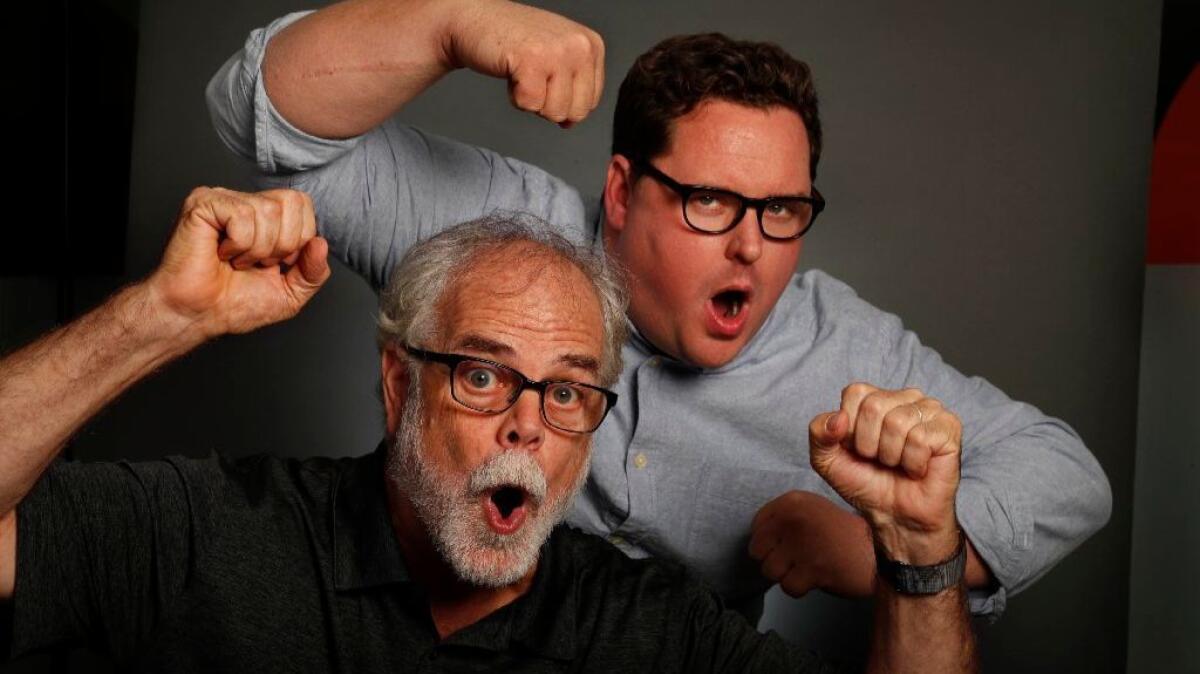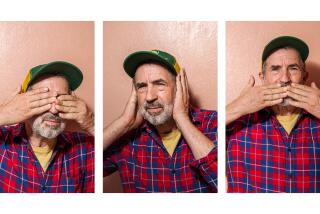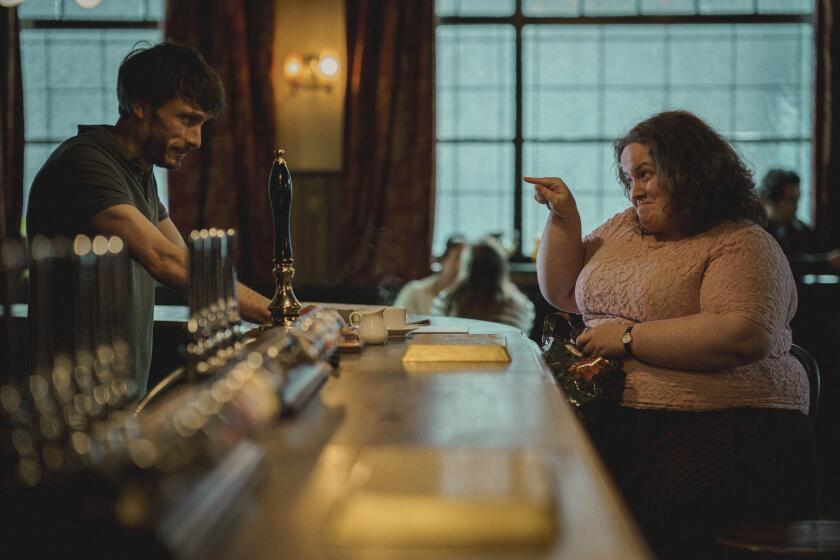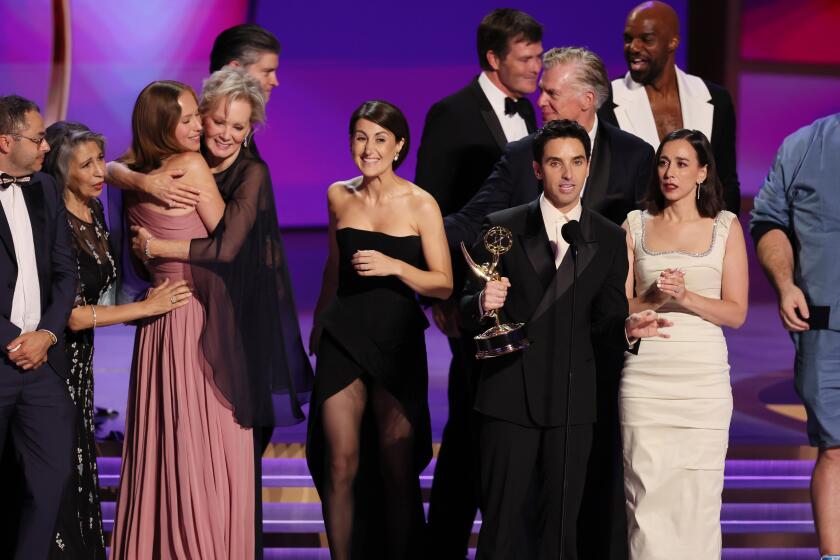‘Apes’ sound designers know how to ‘sneak’ emotion into the moviegoing experience

When director Matt Reeves was assembling a crew for 2008’s “Cloverfield,” there were two top contenders to design the sound: Douglas Murray and Will Files.
“So we both could have gone into competition with each other to get the job, but we have very complementary skill sets,” said Murray. “So I approached Will and said, ‘What if we go after it together as a team?’ ”
“It made perfect sense to me,” said Files.
Since then, they’ve teamed up to create the sound for three additional films directed by Reeves: 2010’s “Let Me In,” 2014’s “Dawn of the Planet of the Apes” and their latest collaboration, “War for the Planet of the Apes.”
On “War for the Planet of the Apes,” how did you create the apes’ voices?
Murray: Matt made the point early on and throughout that he really wanted us to honor the original performances of the actors on the set and their vocal interpretations of the ape voices for the film above all else.
Files: We tried to preserve the emotional intent of those performances as much as possible, even if we were adding things to it or twisting it around in various ways or processing it to make it sound more ape-like.
How did you achieve that?
Murray: The location recordist used tiny mics that were hidden in the motion-capture suits. We had a separate track for each character. But these mics don’t get a lot of chest resonance, even if it was there in the actor, so we had to augment that in many cases. Will came up with a great idea of playing the sound into a djembe drum and then mic-ing it. We did it through a software device to make it more convenient, but that’s effectively what was happening. And a djembe drum is just a wooden drum with a skin over it that gave a resonant sound of the right timbre for the gorilla and the orangutan characters. We also added a lot of breaths and ape-like grunts and things.
Files: There are a lot of scenes with hundreds of apes. It was a huge amount of work, because not only did it have to be convincing, but it had to be emotionally correct and emotionally successful. For example, in the scene after the big battle in the beginning of the film, Caesar’s walking through the remnants of his army, and they’re all hurt and injured and sad. And that whole scene plays out with no music and very little talking for quite a while. And then when they do start talking, it’s very sparse. And so much of the emotional support of that scene comes from the off-screen apes, almost like a Greek chorus. Most of that material was added 100% in post-production, because there weren’t any on-set recordings to base it off of. So in that case, that is actually much more leaning on the sounds of real ape recordings. Doug flew all around the country recording different primates at different zoos. We have a huge library of monkeys.
Murray: You see chimps. You see orangutans. You see gorillas. And we focused on those types of apes. There are some other ape sounds that occasionally we used, because they’re similar voices, but more extreme emotions. We used some baboons screaming for wounded apes. We used some other monkeys. And then we used some gibbons for their beautiful cries as background textures in some scenes.
How do you place those sounds into the context of the film?
Files: The first part of that process is that you try to remove as much of the acoustic signature as you can, especially when sounds are recorded in places like zoos — big cement rooms with ugly sounding echoes. So we try to remove as much as we can to start at a neutral point, and then we add layers of different types of reverbs and echoes to the sounds to try to make them sound real.
What’s your favorite part of your job?
Murray: I love working with the director and the picture editor and the other members of the sound team to create a way to focus the attention of the audience on what’s important now in the movie. Sound is such a big part of that focusing and evolving and changing, and it’s so dynamic throughout a film.
Files: I love the secretive nature of how sound has this wonderful way of sneaking in the side door of your brain and suggesting all these things and making you feel certain ways, without you ever even understanding that that’s what’s happening. It would be very hard to be moved by a film with the sound turned off. It’s a richer experience because of the sound.

See the most read stories this hour »
More to Read
From the Oscars to the Emmys.
Get the Envelope newsletter for exclusive awards season coverage, behind-the-scenes stories from the Envelope podcast and columnist Glenn Whipp’s must-read analysis.
You may occasionally receive promotional content from the Los Angeles Times.





